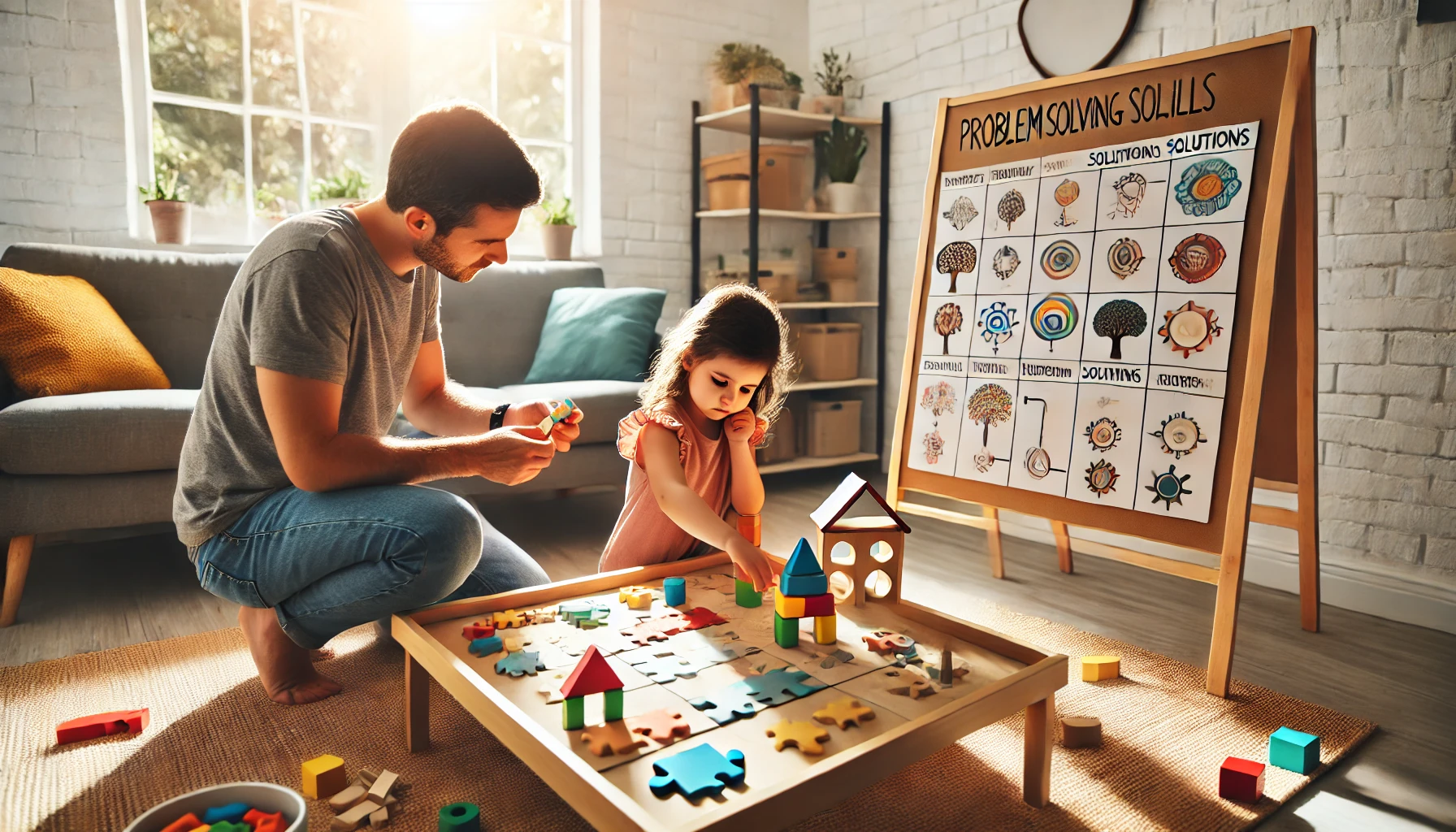How to Teach Young Children About Problem-Solving and Critical Thinking
Teaching young children how to solve problems and think critically helps them develop independence, creativity, and confidence. When kids learn to analyze situations, find solutions, and think through challenges, they become more adaptable and resilient. Parents can encourage problem-solving skills through play, real-life scenarios, and guided discussions. In this article, we’ll explore practical ways to help children develop strong problem-solving and critical thinking abilities.
Why Teaching Problem-Solving is Important
- Encourages independence – Helps children solve problems on their own.
- Develops creativity and logical thinking – Teaches kids to explore different solutions.
- Builds resilience – Helps children handle challenges with confidence.
- Improves decision-making – Encourages thoughtful and informed choices.
- Prepares for real-life situations – Teaches kids to adapt and think critically.
1. Encourage a Growth Mindset
Teaching children that mistakes help them learn builds resilience and confidence.
Activity Idea:
- When kids struggle, say, “Let’s figure this out together!” instead of giving the answer.
- Teach them to say “I can’t do it… yet!” to reinforce a growth mindset.
- Praise effort over results: “You worked so hard on that puzzle!”
What Kids Learn:
- That challenges are part of learning
- How to stay positive when things are difficult
- The importance of effort in problem-solving
2. Use Open-Ended Questions to Encourage Thinking
Asking thought-provoking questions helps kids explore different solutions.
Activity Idea:
- Instead of saying, “That’s wrong,” ask, “What could we try instead?”
- Encourage brainstorming by asking, “What are some other ways we could do this?”
- Play a game where kids come up with three different solutions to a simple problem.
What Kids Learn:
- How to think critically before making decisions
- That there are multiple ways to solve a problem
- The importance of considering different perspectives
3. Play Problem-Solving Games and Activities
Hands-on activities help children practice thinking through challenges.
Activity Idea:
- Do puzzle challenges where kids must figure out how pieces fit together.
- Play “What Would You Do?” scenarios, such as “What would you do if you lost a toy?”
- Build a tower with blocks and challenge kids to make it stronger if it falls.
What Kids Learn:
- That problem-solving can be fun and engaging
- How to test different solutions and adjust when needed
- The importance of patience and creativity
4. Teach Kids to Break Problems into Steps
Breaking challenges into small steps makes them easier to solve.
Activity Idea:
- Teach the “Stop, Think, Plan, Try” method:
- Stop and recognize the problem.
- Think about possible solutions.
- Plan how to try one solution.
- Try and adjust if needed.
- Role-play common challenges like losing a toy or resolving a disagreement with a friend.
What Kids Learn:
- That problem-solving happens in steps
- How to approach challenges without frustration
- The value of planning before acting
5. Encourage Creative Thinking Through Play
Creative activities help children think outside the box when solving problems.
Activity Idea:
- Give kids everyday objects (like a box or spoon) and ask how they could use them in new ways.
- Encourage storytelling where kids make up endings to unfinished stories.
- Play “What If” games, like “What if we lived in space? How would we eat?”
What Kids Learn:
- How to use imagination to solve problems
- That creativity leads to new ideas and solutions
- The importance of thinking beyond the obvious
6. Teach Kids How to Handle Frustration Positively
Learning to stay calm helps children approach challenges with a clear mind.
Activity Idea:
- Teach deep breathing exercises: “Take a deep breath before trying again.”
- Create a calm-down corner with books, fidget toys, and relaxing activities.
- Use positive self-talk: “I can do this if I keep trying!”
What Kids Learn:
- That frustration is normal but can be managed
- How to stay calm and focused when solving problems
- That taking breaks can help with thinking clearly
7. Read Books That Teach Problem-Solving Skills
Stories help children see examples of characters working through challenges.
Activity Idea:
- Read books like Giraffes Can’t Dance by Giles Andreae (about persistence) or Rosie Revere, Engineer by Andrea Beaty (about creativity).
- Pause and ask, “How did the character solve their problem?”
- Relate the story to real-life experiences: “Have you ever had a challenge like this?”
What Kids Learn:
- How to apply problem-solving skills to their own lives
- The importance of persistence and creative thinking
- That challenges can be overcome in different ways
8. Praise and Reinforce Problem-Solving Efforts
Recognizing children’s problem-solving efforts builds confidence and motivation.
Activity Idea:
- Say, “I love how you kept trying different ways to build your tower!”
- Create a “Problem-Solver Chart” where kids earn stars for finding solutions.
- Ask, “How did it feel to solve that problem on your own?”
What Kids Learn:
- That their efforts are valued and appreciated
- The satisfaction of solving problems independently
- The motivation to keep thinking critically and creatively
Final Thoughts
Teaching young children about problem-solving and critical thinking helps them develop confidence, creativity, and resilience. By encouraging curiosity, playing problem-solving games, and reinforcing positive efforts, parents can help children build essential skills that will benefit them throughout life.
